index
Introduction
Jasmine, with its enveloping beauty and delicate fragrance, has earned a prominent place in the world of landscaping. Its lush flowers not only adorn gardens and green spaces, but also offer a unique sensory experience. In this section, we’ll explore the popularity of jasmine and highlight the importance of understanding proper care to maintain the health and vitality of these magnificent flowers.
Jasmine is known for its captivating beauty, which adds a touch of elegance to any setting. Its flowers, often white or in soft shades, create a charming look that attracts admirers of all ages. In addition to its aesthetics, jasmine is also appreciated for its unmistakable fragrance, which fills the air with floral and refreshing notes.
In the world of landscaping, jasmine is a popular choice due to its versatility and adaptability. Whether in residential gardens, public parks or urban areas, jasmine stands out as a plant that adds a touch of sophistication and tranquillity. Its ability to adapt to different climatic conditions makes it a valuable option for diverse landscaping projects.

Meeting Jasmine
Jasmine, with its diversity of varieties, is a charming choice for any garden. In this section, we’ll dive into a description of the most common varieties and explore the unique characteristics that make jasmine such a popular choice among gardening enthusiasts.
Common Varieties for Gardens
There are several varieties of jasmine, each with its own distinctive charm. Among the most common are:
- Mango jasmine (Jasminum sambac): Known for its fragrant white flowers, mango jasmine is a popular choice in tropical climates. Its flowers are often used in floral arrangements due to their enveloping scent.
- Star jasmine (Trachelospermum asiaticum): Recognized for its star-shaped flowers, this type of jasmine is appreciated for its resistance and lush foliage. It is a versatile option for different growing conditions.
- Yellow jasmine (Jasminum mesnyi): With its vibrant yellow flowers, yellow jasmine adds a touch of radiant color to the garden. Its abundant flowering and mild aroma make it a popular choice.
Features and Attractions
Jasmine wins hearts not only for the diversity of its varieties, but also for its distinctive characteristics that make it such a popular choice in the gardening world.
- Unmistakable Fragrance: One of the most striking characteristics of jasmine is its unique fragrance. The flowers emit a delicate scent that fills the air, creating an enchanting atmosphere in the garden.
- Landscaping versatility: Jasmine adapts well to different styles of landscaping. It can be used in beds, trellises, pots or even as a ground cover, giving versatility to its application in gardening projects.
- Generous Flowering: Jasmine’s ability to produce generous flowers is one of its main attractions. Abundant flowering not only adds visual beauty, but also attracts pollinators, enriching the garden ecosystem.
By getting to know jasmine varieties and appreciating their distinctive characteristics, gardening enthusiasts can make informed decisions when incorporating this enchanting plant into their green spaces. Jasmine, with its diversity and enduring appeal, remains a timeless choice for transforming any garden into a fragrant and visually stunning oasis.
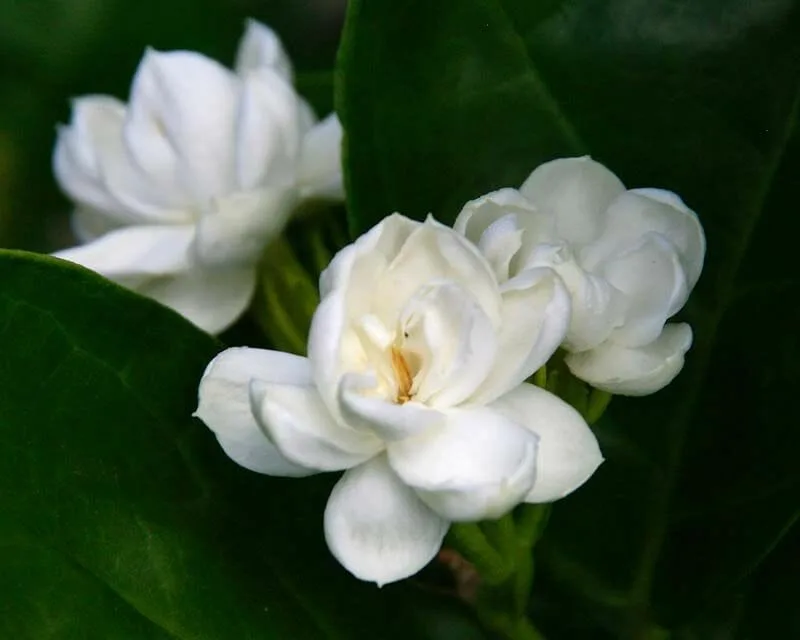
Ideal Growing Conditions
To ensure that jasmine blooms in all its glory, it is essential to provide the ideal growing conditions. In this section, we’ll look at the three main factors that influence the healthy development of jasmine: light, soil and temperature.
Sunlight
Jasmine is a plant that craves sunlight in order to thrive. When choosing a planting site, make sure you select a sunny area. Direct sunlight is crucial for the process of photosynthesis, which drives growth and flower production. In places with excessive shade, jasmine may not reach its full potential, resulting in reduced flowering and limited growth.
Soil
The type of soil plays a crucial role in the successful cultivation of jasmine. Opt for light, well-drained soil to avoid excessive water accumulation, which can lead to root problems and rotting. Soil mixtures rich in organic matter are favorable, providing the necessary nutrients for jasmine’s lush growth. Make sure the pH of the soil is in the right range, usually slightly acidic to neutral.
Temperature
Jasmine is a plant that appreciates moderate to warm temperatures. The preferred temperature range is between 18°C and 30°C. Avoid prolonged exposure to extreme temperatures, both cold and hot, as this can negatively impact the plant’s healthy development. In colder climates, consider protecting the jasmine during the colder months, thus ensuring its continued resistance and vitality.
Rega Adequada
Watering is a crucial element in the healthy cultivation of jasmine. In this section, we’ll explore frequency, quantity and some valuable tips to ensure that the plant receives the right amount of water, keeping the soil moist but avoiding the risk of waterlogging.
Frequency and Quantity
Jasmine appreciates moist soil, but does not tolerate excess water. The key to proper watering lies in finding the perfect balance between frequency and amount of water. Water the jasmine when the top of the soil is dry to the touch, but before it becomes completely arid. The amount of water should be enough to evenly moisten the soil to the depth of the roots, without causing stagnation.
Tips to Avoid Problems
1. Efficient drainage:
Make sure that the container or planting site has good drainage. Water accumulating in the roots can lead to rot and other problems related to excess moisture.
2. Observation of the Plants:
Monitor the condition of the leaves and soil closely. Yellowing leaves may indicate too much water, while wilted leaves may suggest too little. Close observation helps to adjust watering as necessary.
3. Morning meal:
Prefer to water jasmine early in the morning. This allows the plant to absorb moisture during the day, while exposure to the sun helps prevent fungal problems caused by humid conditions at night.
4. Mulch layer:
Applying a layer of mulch around the jasmine helps retain moisture in the soil, reducing evaporation and providing a more stable environment for the roots.
By following these guidelines, you’ll be well on your way to giving your jasmine the right watering. Maintaining water balance is essential for promoting robust growth, ensuring that your jasmine blooms healthily and exuberantly.
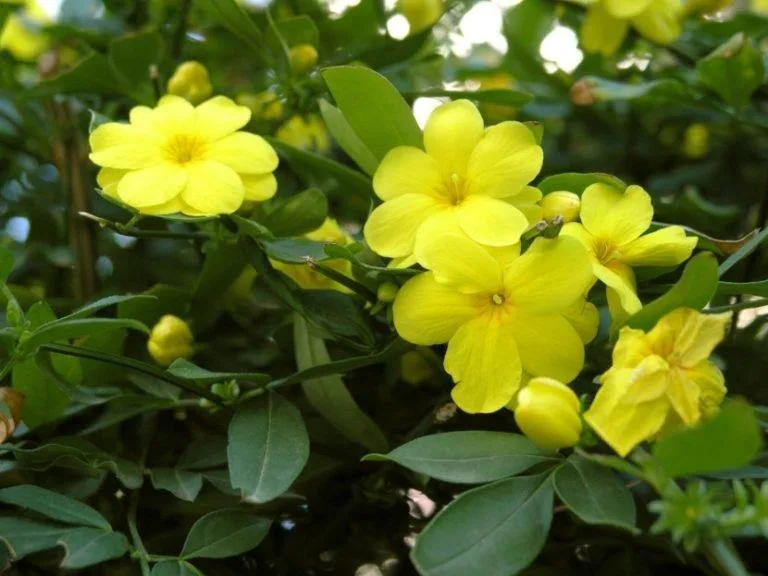
Fertilization and Nutrients
Ensuring that jasmine receives the right nutrients is key to promoting healthy growth and lush flowering. In this section, we’ll explore essential nutrient guidelines and offer practical recommendations on types of fertilizer and the ideal frequency of application.
Essential Nutrients for Jasmine to Bloom
Jasmine, like any plant, requires a variety of nutrients to thrive. Among the essential nutrients are:
- Nitrogen (N): Stimulates vegetative growth and leaf exuberance.
- Phosphorus (P): Promotes the development of robust roots and the formation of flowers.
- Potassium (K): Contributes to disease resistance and promotes flower quality.
- Micronutrients (iron, zinc, manganese, etc.): Essential in small quantities for specific plant functions.
Choosing the Right Fertilizer
When fertilizing jasmine, it’s important to choose a balanced fertilizer, such as a 10-10-10 granular fertilizer, which provides equal proportions of nitrogen, phosphorus and potassium. In addition, considering a fertilizer rich in organic matter can benefit the soil in the long term.
Application Frequency
The frequency of fertilizer application varies according to the time of year and the type of jasmine. It is recommended to fertilize jasmine in spring, when the plant enters its period of active growth. During this period, a monthly application of fertilizer is usually sufficient. However, it is crucial to follow the manufacturer’s instructions to avoid overdoing it, which can be harmful to the roots.
Powder and Maintenance
Pruning is an essential practice for keeping jasmine healthy, promoting abundant flowering and controlling the size of the plant. In this section, we’ll explore the importance of pruning and offer step-by-step instructions to ensure you carry out this vital task properly.
The Strategic Importance of Pruning
Pruning is more than just cutting branches; it is a fundamental strategy for optimizing the growth and appearance of jasmine. Some of the benefits of pruning include:
- Stimulate Flowering: By pruning regularly, you encourage the jasmine to produce more flowers, resulting in an even more exuberant display of color.
- Controlling Size: Jasmine can become bulky if not pruned. Controlled pruning helps keep the plant at a manageable and aesthetically pleasing size.
- Removing Damaged Parts: Pruning allows the removal of diseased, damaged or dead branches, promoting the overall health of the plant.
Step-by-Step Instructions for Proper Pruning
1. Choice of Tools:
Use sharp, clean pruning shears to ensure precise cuts and reduce the risk of infection.
2. Identification of Branches for Pruning:
Select branches that are older, diseased or excessively long for pruning. Give priority to branches that are compromising the desired shape of the plant.
3. Faded Flowers Paddle:
Remove faded flowers to encourage the continuous production of new flower buds.
4. Angle Cut:
Make cuts at a 45-degree angle, about 0.5 cm above a healthy node or bud. This helps with efficient healing and prevents water from accumulating in the cuts.
5. Attention to Pruning Season:
The best time to prune jasmine is after flowering, usually in spring. Avoid pruning in late fall or winter, as this can damage the flower buds that will form next season.
6. Removal of crossed branches:
Eliminate branches that cross, as this can cause friction and hinder healthy growth.
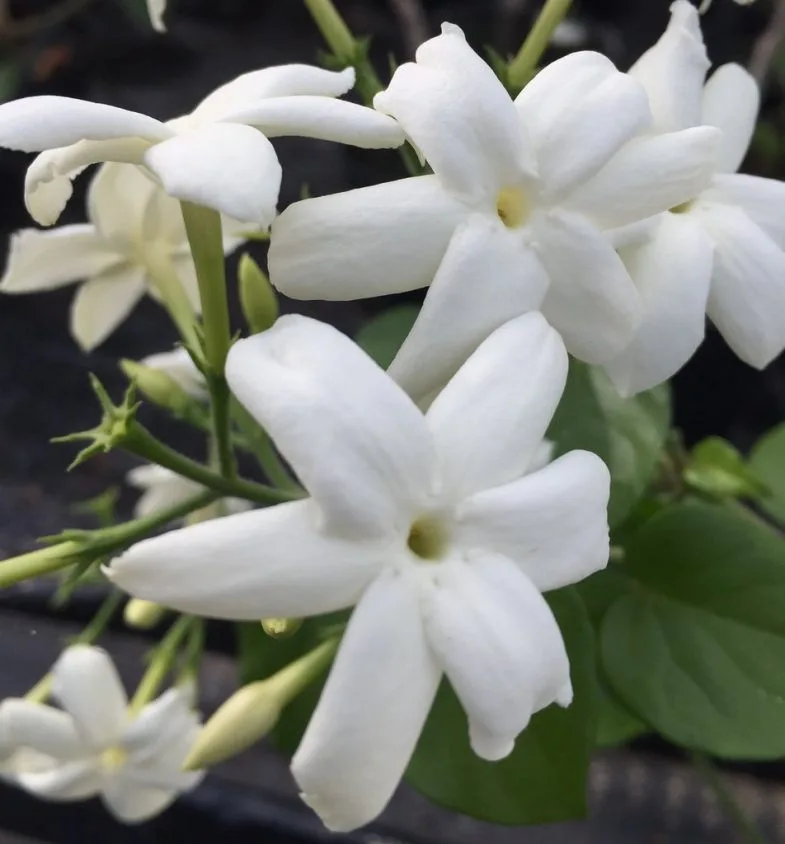
Common Problems in Growing Jasmine
Even with all the care, jasmine can face challenges in the form of pests and diseases. In this section, we’ll look at identifying common problems that affect jasmine and offer effective solutions to keep your plants healthy and vibrant.
Pests that Haunt the Jasmine Garden:
Mites:
- Identification: Small dots or webs on the leaves.
- Resolutions: Rinse the leaves with water or use neem oil.
Aphids:
- Identification: Small insects in groups at the tips of the shoots.
- Resolutions: Control manually or use insecticidal soap.
Bugs:
- Identification: Cottony masses on the leaves.
- Resolutions: Remove manually or use neem oil.
Disease-Related Challenges:
Mildew:
- Identification: White powdery spots on the leaves.
- Resolutions: Treat with sulfur or baking soda.
Root rot:
- Identification: Dark and shriveled roots.
- Resolutions: Improve soil drainage and avoid excess water.
Rust:
- Identification: Yellow spots and rust on the leaves.
- Resolutions: Remove affected leaves and use specific fungicides.
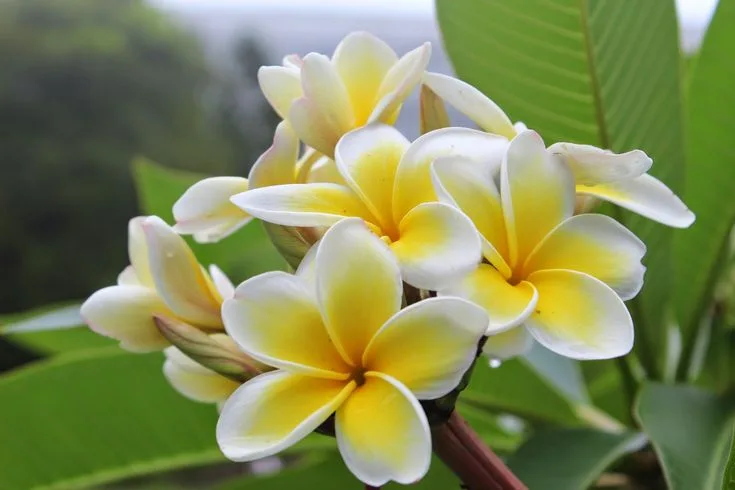
Methods for Control and Prevention:
Organic Approaches:
Neem oil:
- Use neem oil to control spider mites, aphids and mealybugs.
Insecticidal soap:
- Mix homemade insecticidal soap to fight aphids naturally.
Sodium Bicarbonate:
- Create a baking soda solution to treat powdery mildew.
Moderate Chemical Solutions:
Specific Fungicides:
- Apply specific fungicides to combat diseases such as rust.
Moderate Insecticides:
- In severe cases, use moderate insecticides to control persistent pests.
General Tips for Prevention:
- Crop rotation: Avoid planting jasmine in the same place for long periods.
- Regular Monitoring: Be on the lookout for signs of pests and diseases for early intervention.
- Good Drainage: Keep the soil well drained to prevent root problems.
By implementing these solutions to common jasmine growing problems, you will be strengthening your plants against threats, ensuring that they flourish with long-lasting health and beauty.
The Captivating Story of Jasmine
As well as its striking beauty, jasmine carries with it a rich history and deep symbolism in different cultures. In this section, we’ll explore fascinating information about jasmine throughout history and its symbolic meaning around the world.
Old Origins:
Jasmine has a remarkable presence in ancient history, being cultivated and appreciated by civilizations such as the Egyptians and Persians. Its delicate flowers were often associated with beauty and purity.
Symbolism in Indian Culture:
In India, jasmine is more than just an ornamental plant. It is considered a sacred flower associated with the goddess Saraswati, symbolizing knowledge and wisdom. Its flowers are used in religious ceremonies and to make floral necklaces.
Romance in the Arab Tradition:
Jasmine is also a romantic figure in the Arab tradition. Its flowers are often mentioned in poetry and love stories, symbolizing passion and eternal beauty.
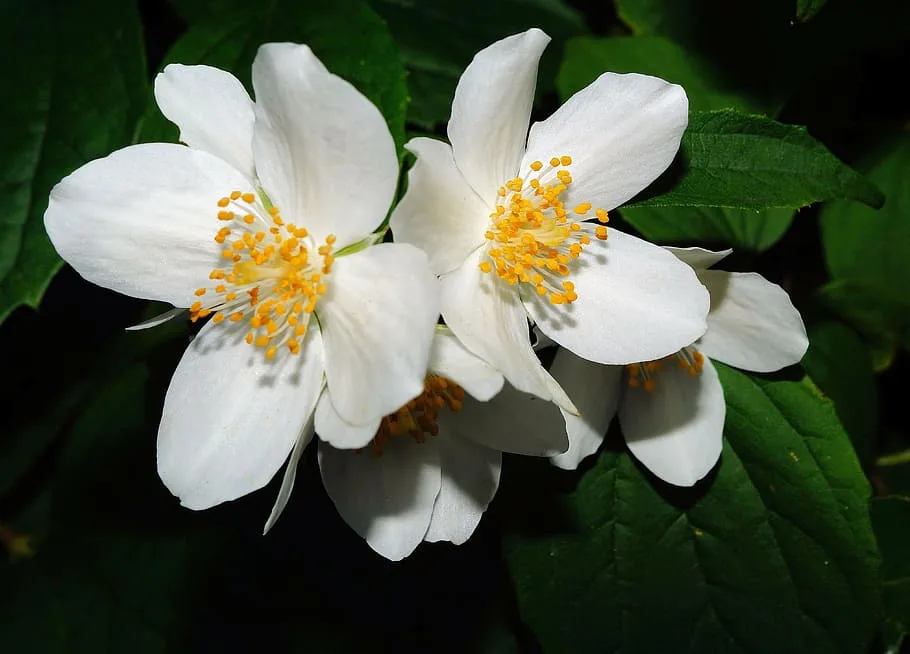
Conclusion
After exploring various facets of jasmine care throughout this blog, it’s crucial to recap the main points that ensure success in growing this enchanting plant. Let’s summarize the essential guidelines to ensure that your garden blooms with the exuberance of jasmine.
Main Highlights:
1. Getting to know the varieties:
- Identify the varieties: Get to know the different species of jasmine to choose the ones that best suit your environment and aesthetic preferences.
2. Ideal Growing Conditions:
- Light, soil and temperature: Provide ideal conditions, including adequate sunlight, well-drained soil and moderate temperatures for healthy jasmine development.
3. Adequate watering:
- Water balance: Keep the soil moist, but avoid waterlogging. Proper watering is crucial for root health and flower production.
4. Fertilization and Nutrients:
- Essential nutrients: Provide the right nutrients, such as nitrogen, phosphorus and potassium, to promote healthy growth and flowering.
5. Pruning and maintenance:
- Strategic pruning: Carry out regular pruning to stimulate flowering and control the size of the plant. Remove damaged parts to maintain vitality.
6. Common problems and solutions:
- Early identification: Be on the lookout for pests and diseases, identifying signs early. Use moderate organic and chemical methods for control and prevention.
Encouraging Continuous Practice
In concluding this guide, we reinforce the importance of continually practicing good gardening techniques. Jasmine, with its rich history, enchanting symbolism and incomparable beauty, will reward your dedicated care with a stunning garden.
Keep your passion for gardening, watch your plants closely and adjust care as necessary. By cultivating jasmine with care and knowledge, you’ll transform your green space into a fragrant haven, filled with the timeless beauty of jasmine.
Frequently Asked Questions
What to do to make jasmine bloom?
To ensure that your jasmine plant blooms exuberantly, it is essential to provide it with ideal growing conditions. Make sure the plant receives adequate sunlight, keep the soil moist but not soggy, and use a balanced fertilizer during the growing season. Regular pruning also stimulates flower production by removing old branches and encouraging new shoots.
Can you have jasmine indoors?
Although many varieties of jasmine benefit from sunlight outdoors, some adaptations make it possible to grow them indoors. Choose varieties suitable for indoors, position the plant near sunny windows, maintain adequate watering and consider supplementing the light with special plant lamps. Remember to provide an airy environment and avoid intense draughts.
How to keep jasmine in a vase?
Keeping jasmine in a pot requires special attention to ensure it blooms continuously. Use well-drained soil, watering when the top of the soil is dry. Fertilize regularly during the growing season and monitor root development, considering changing the pot when necessary. Moderate pruning is also crucial to control the size of the plant and promote overall health in a limited environment such as a pot.







